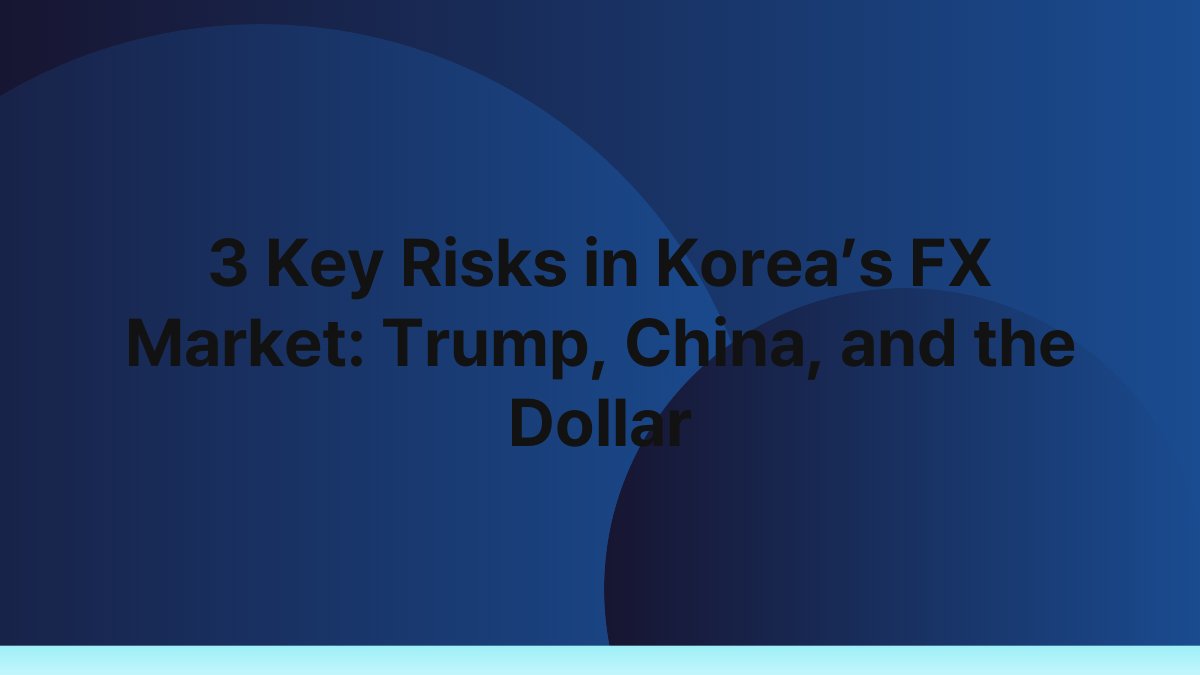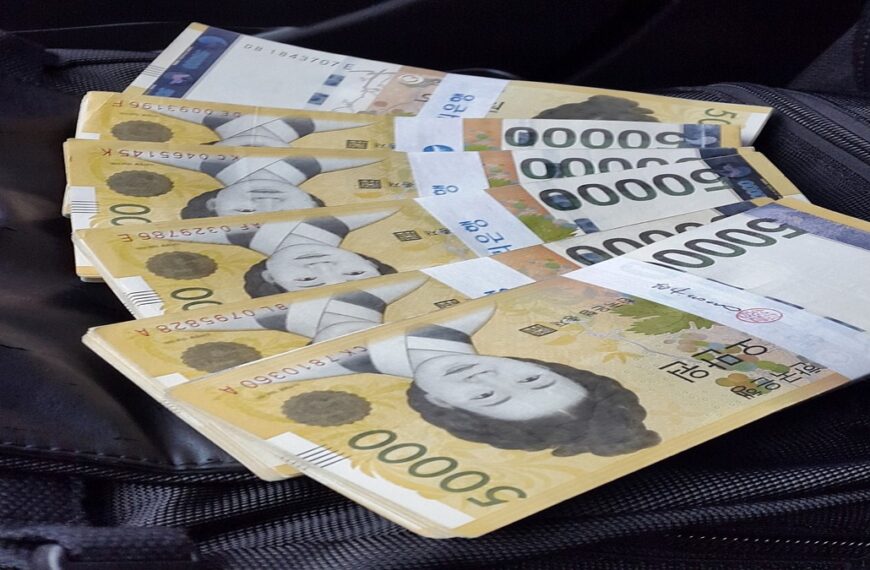[K-Bridge/Samuel] In the ever-evolving landscape of global finance, South Korea’s foreign exchange (FX) market faces significant challenges.
Among these challenges, three key risks stand out: the influence of Donald Trump, the economic dynamics with China, and the fluctuations of the US dollar.
Each of these factors can drastically impact currency stability, trade balances, and overall economic health.
Understanding these risks is crucial for investors, policymakers, and businesses operating in or with South Korea.
This article will explore these three key risks in detail, providing insights into their implications for the FX market.
The Impact of Trump on Korea’s FX Market
Trump’s Trade Policies and Their Consequences
Donald Trump’s presidency was marked by a series of unpredictable trade policies that had global ramifications.
His administration’s approach to trade negotiations, particularly with China, created an environment of uncertainty.
This uncertainty often leads to volatility in the FX market, as investors react to potential tariffs and trade barriers.
South Korea, being a significant trading partner with both the US and China, found itself in a precarious position.
The imposition of tariffs can affect South Korean exports, leading to a depreciation of the Korean won against major currencies.
Additionally, Trump’s focus on American manufacturing and job creation often translated into policies that favored US industries over foreign competitors.
This shift could further strain trade relations, impacting South Korea’s economic growth.
As a result, the FX market becomes susceptible to sudden shifts based on Trump’s statements or policy announcements, creating a challenging environment for currency stability.
Market Reactions to Political Statements
The FX market is highly sensitive to political statements, especially from influential leaders like Trump.
His tweets and public comments can lead to immediate reactions in currency values.
For South Korea, this means that any perceived threat to trade agreements or economic partnerships can trigger volatility in the won’s value.
Investors closely monitor Trump’s communications, often leading to speculative trading that exacerbates price fluctuations.
The unpredictability of Trump’s rhetoric means that South Korean businesses must remain agile, adjusting their strategies in response to potential shifts in trade policy.
This constant state of alert can strain resources and lead to increased costs, ultimately affecting the overall economic landscape in South Korea.
Long-term Implications for South Korea
The long-term implications of Trump’s policies on South Korea’s FX market extend beyond immediate volatility.
If trade tensions persist, South Korea may need to diversify its economic partnerships to mitigate risks associated with over-reliance on the US market.
This diversification could involve strengthening ties with other nations and exploring new trade agreements.
Moreover, the potential for a shift in US leadership could also alter the dynamics of the FX market.
A different administration may adopt a more collaborative approach to trade, which could stabilize the won and enhance economic growth.
However, until such changes occur, South Korea must navigate the complexities introduced by Trump’s policies, ensuring that its FX market remains resilient in the face of uncertainty.
The Influence of China on Korea’s FX Market
Economic Interdependence Between Korea and China
China is South Korea’s largest trading partner, making its economic health crucial for the stability of the Korean FX market.
The interconnectedness of these two economies means that any fluctuations in China’s economic performance can have direct consequences for South Korea.
For instance, a slowdown in China’s growth can lead to reduced demand for South Korean exports, impacting the won’s value against other currencies.
This economic interdependence also means that geopolitical tensions involving China can create significant risks for South Korea’s currency.
Events such as trade disputes, territorial conflicts, or diplomatic strains can lead to market instability.
Investors often react to these developments, causing fluctuations in the won’s value as they reassess their risk exposure.
The Belt and Road Initiative and Its Effects
China’s Belt and Road Initiative (BRI) represents a significant investment in infrastructure and trade routes across Asia and beyond.
While this initiative offers potential economic benefits for South Korea, it also poses risks.
Increased Chinese influence in the region could lead to greater competition for South Korean businesses, particularly in sectors such as technology and manufacturing.
As China expands its economic reach, South Korean companies may face challenges in maintaining market share.
This competitive pressure can affect investor confidence, leading to volatility in the FX market.
South Korea must navigate these challenges carefully, ensuring that it remains competitive while also leveraging opportunities presented by the BRI.
Navigating Geopolitical Risks
Geopolitical risks associated with China’s rise are another critical factor influencing Korea’s FX market.
Tensions in the South China Sea, North Korea’s nuclear ambitions, and China’s assertive foreign policy can create an environment of uncertainty.
Investors often react to these geopolitical developments, leading to fluctuations in currency values.
To mitigate these risks, South Korea may need to enhance its diplomatic efforts and strengthen alliances with other nations.
By fostering stable relationships, South Korea can create a more predictable environment for investors, reducing the likelihood of sudden currency fluctuations.
This proactive approach is essential for maintaining stability in the FX market amidst geopolitical uncertainties.
The Fluctuating Value of the US Dollar
The Dollar’s Role as the World’s Reserve Currency
The US dollar serves as the world’s primary reserve currency, making its fluctuations a significant factor in global finance.
For South Korea, the value of the dollar directly impacts trade balances, investment flows, and currency stability.
A strong dollar can make South Korean exports more expensive for foreign buyers, potentially leading to a decline in demand.
Conversely, a weak dollar can enhance the competitiveness of South Korean goods in international markets.
This relationship means that South Korean businesses must closely monitor dollar movements, adjusting their pricing and sales strategies accordingly.
Additionally, fluctuations in the dollar can influence foreign investment decisions, impacting capital flows into South Korea.
A stable dollar is crucial for maintaining investor confidence and ensuring a healthy FX market.
Interest Rates and Dollar Valuation
Interest rates set by the US Federal Reserve play a pivotal role in determining the value of the dollar.
When the Fed raises interest rates, the dollar often strengthens as investors seek higher returns on US assets.
This scenario can create challenges for South Korea, as a stronger dollar can lead to capital outflows and currency depreciation.
In response, South Korea’s central bank may need to adjust its monetary policy to counteract the effects of rising US interest rates.
This balancing act is essential for maintaining currency stability and ensuring that the Korean economy remains resilient in the face of global financial shifts.
Global Economic Trends and the Dollar
Global economic trends significantly influence the value of the dollar, impacting South Korea’s FX market.
Economic growth in major economies, trade balances, and geopolitical developments all contribute to dollar fluctuations.
For instance, a robust economic recovery in Europe or Asia can lead to a weaker dollar, benefiting South Korean exports.
However, South Korea must remain vigilant, as shifts in global economic dynamics can create volatility in the FX market.
By closely monitoring these trends, South Korean businesses and investors can better position themselves to navigate potential challenges and capitalize on opportunities presented by changing dollar valuations.
Conclusion
Understanding the key risks in Korea’s FX market—stemming from Trump, China, and the dollar—is essential for navigating the complexities of global finance.
Each of these factors presents unique challenges that can significantly impact currency stability, trade balances, and economic growth.
By staying informed and proactive, South Korean businesses and policymakers can mitigate risks and seize opportunities in an increasingly interconnected world.








